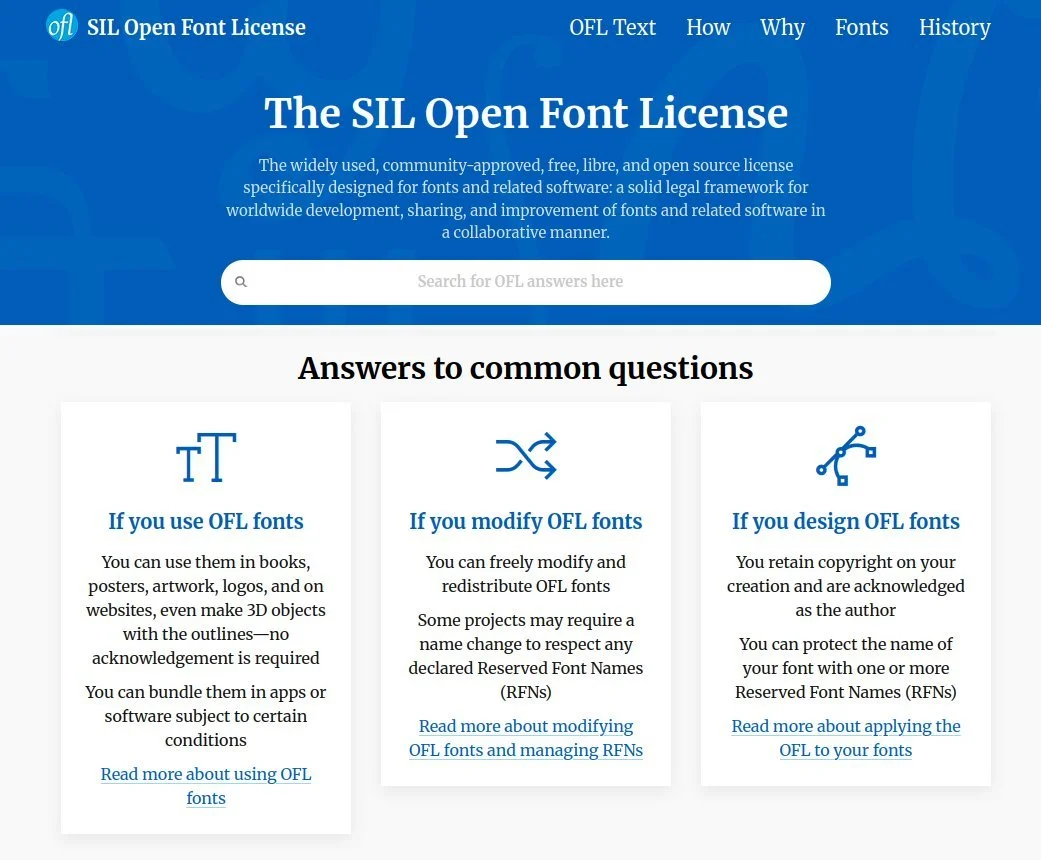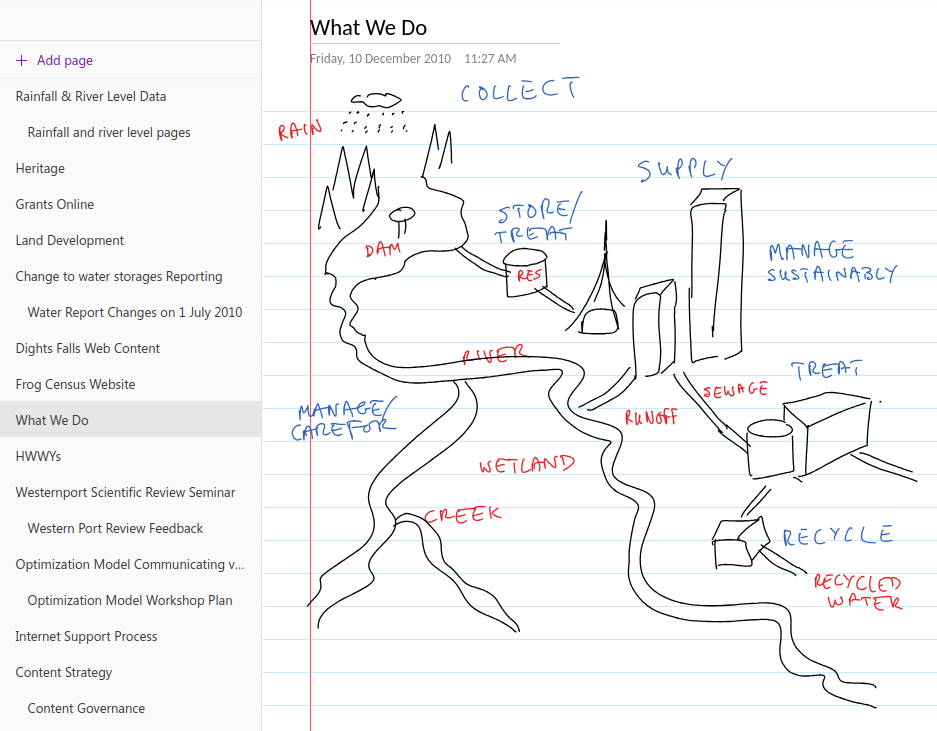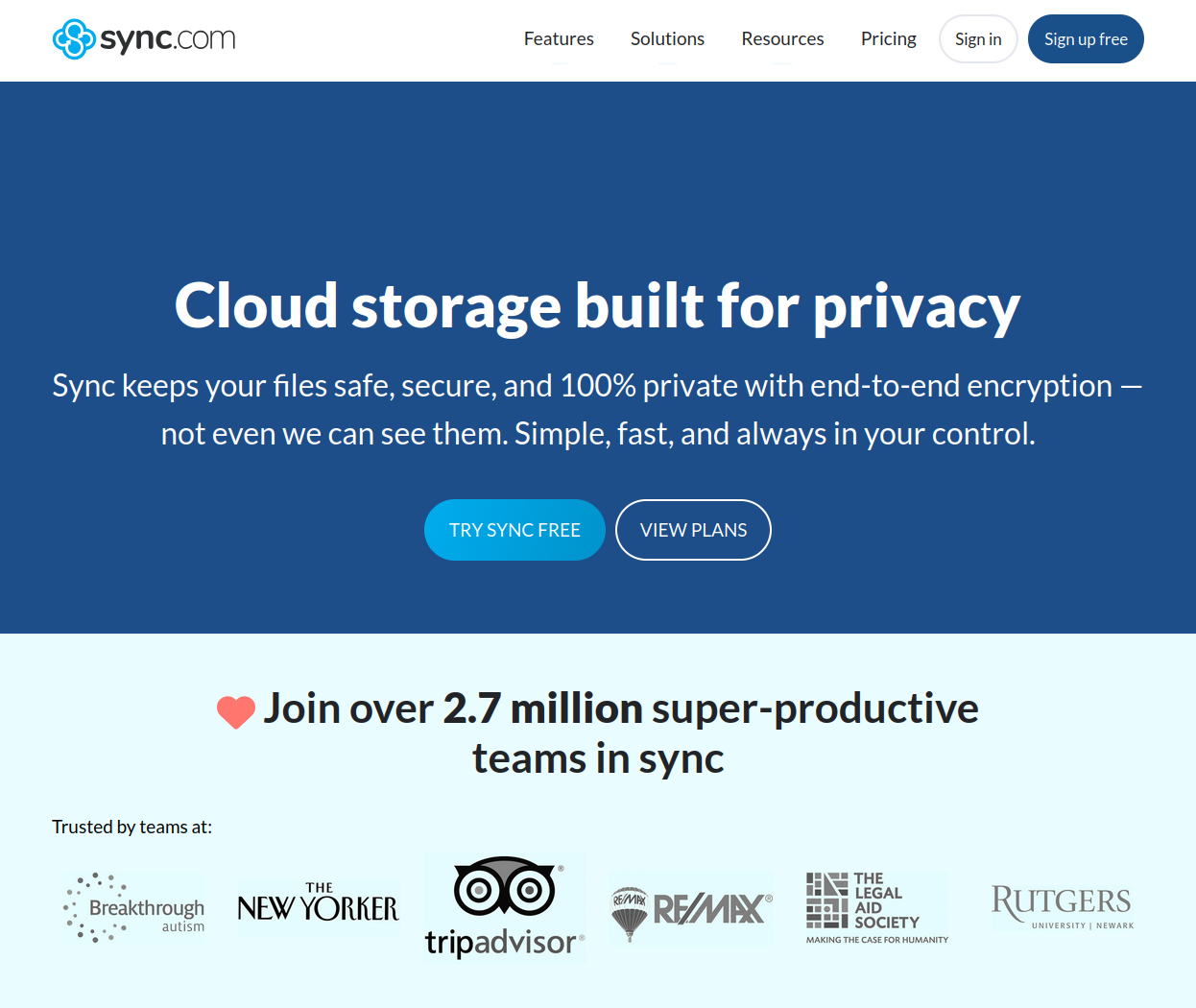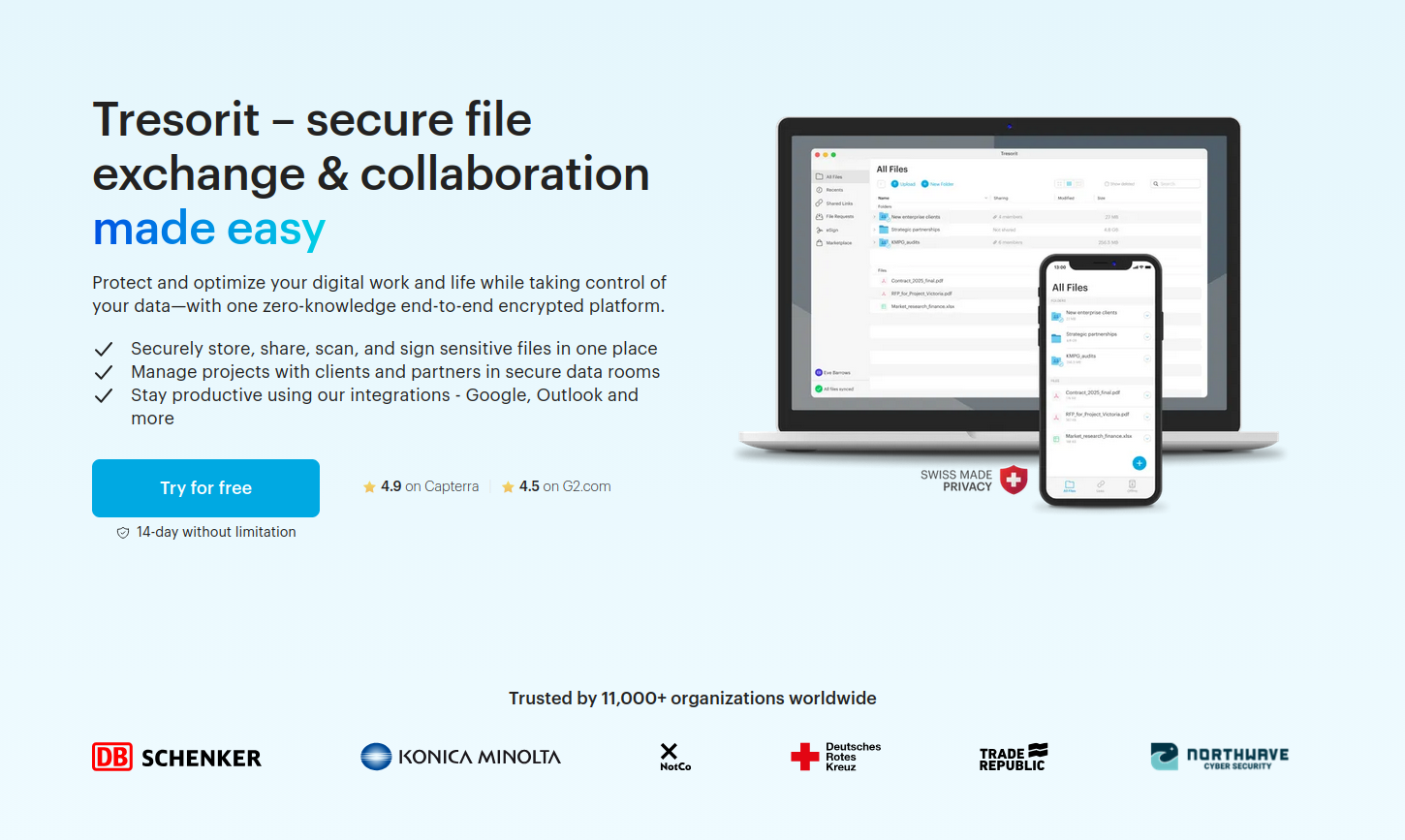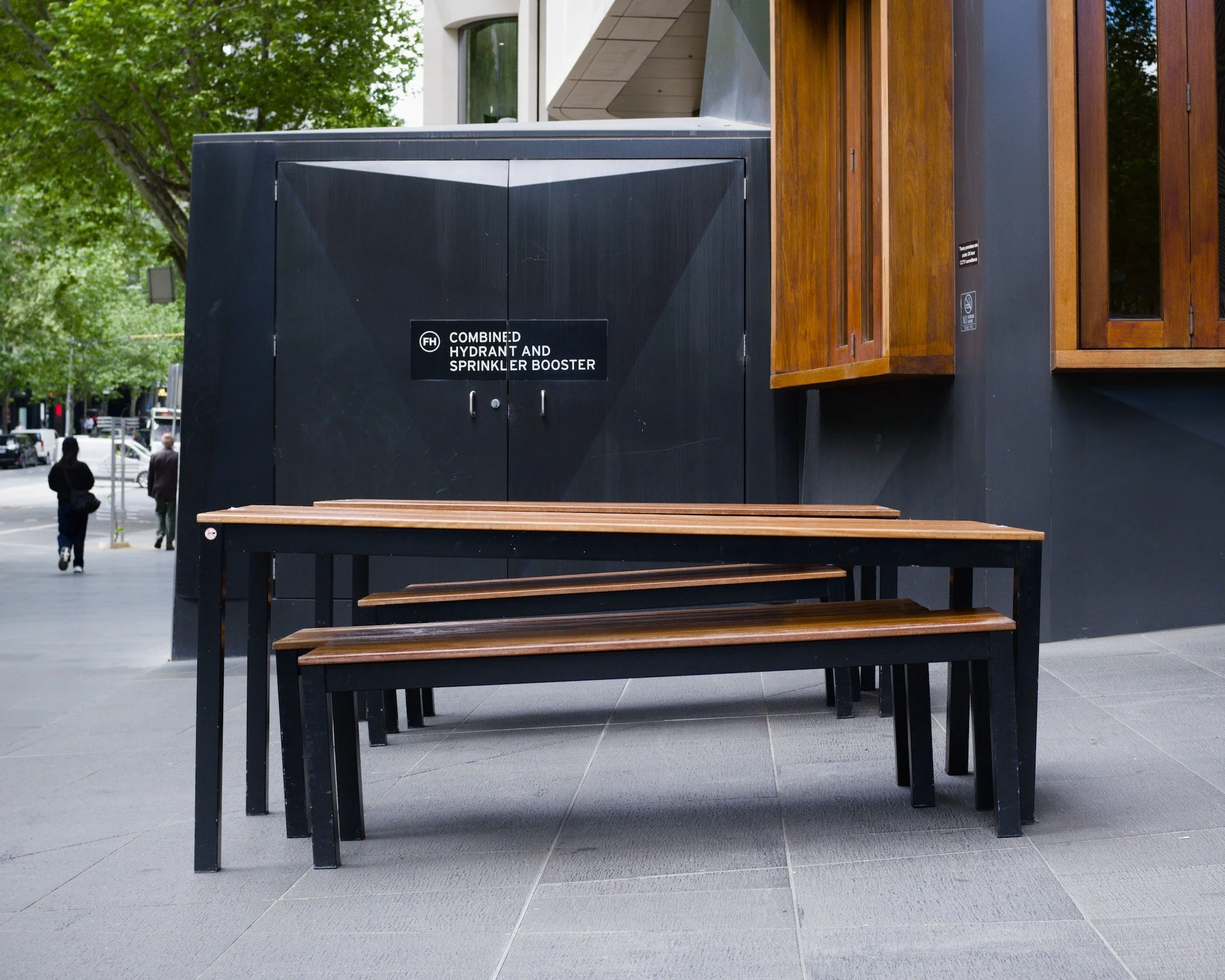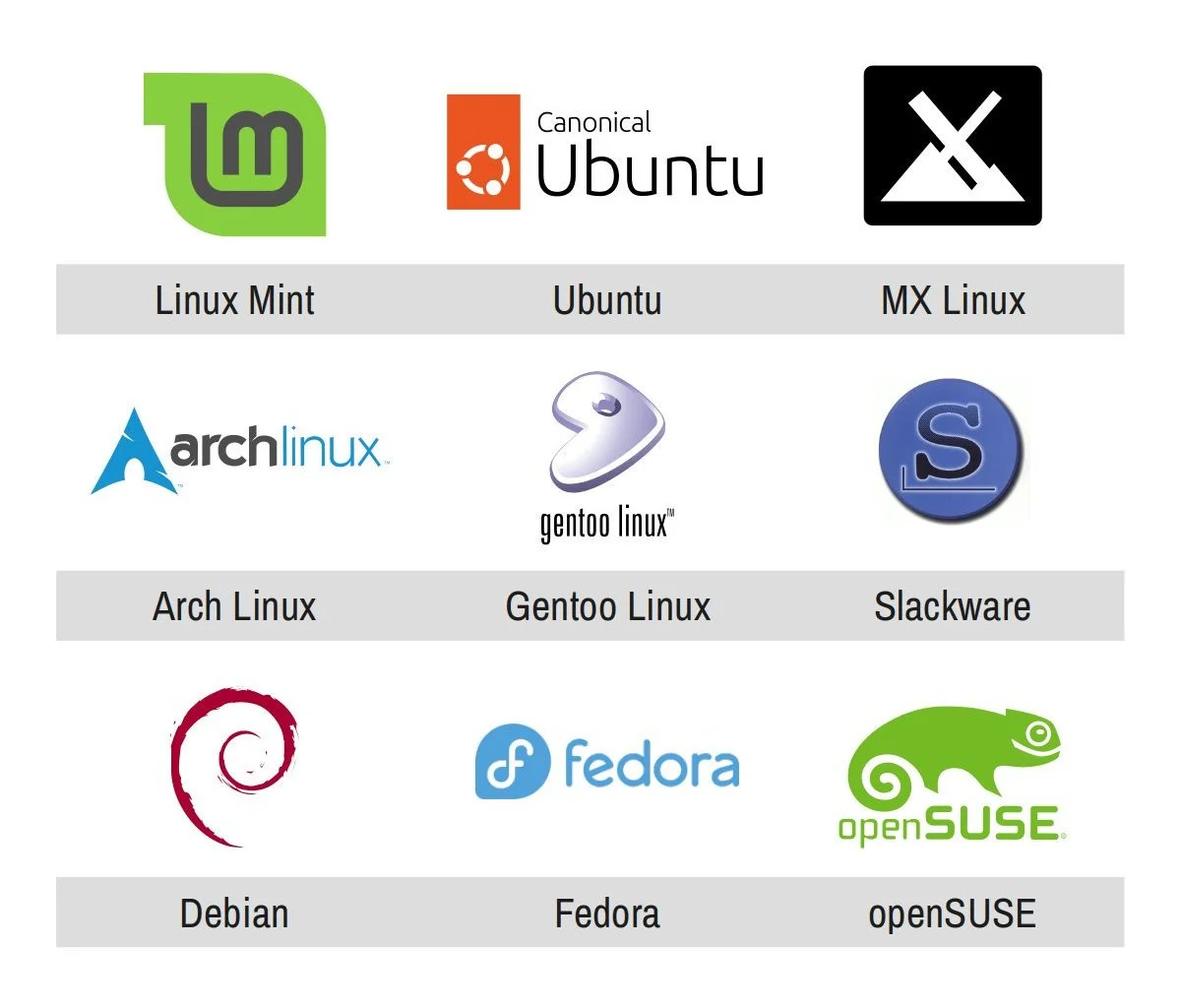tl;dr Don’t try to shake-down a typography nerd with your dubious, automated claims about his employer using unlicensed fonts.
How it started
It started with a LinkedIn InMail message (sanitised to protect privacy):
Subject: [Urgent] Font Software Licensing Review
Hi Ameel
I hope you’re doing well.
I’m [NAME] from Monotype and have been trying to reach you at [WORK EMAIL ADDRESS], but I’m unsure if my emails have been received.
Our team has identified Monotype font software embedded in the websites/apps of [YOUR COMPANY], but we couldn’t locate the corresponding licenses in our database.
Would you be able to share the correct email address so I can provide more details and documentation? Alternatively, you’re welcome to reach out to me directly at [SENDER’S EMAIL ADDRESS]
I appreciate your time and look forward to resolving this with you at your earliest convenience.
Best regards,
[NAME]
Business Development Representative | Monotype, Australia
I was puzzled by this for two reasons:
This person had my correct work email address, but at no point had they sent me an email about this issue or about anything else. I checked. (Starting with a lie? Not a good look.)
As far as I knew, my employer didn’t use any Monotype fonts on its websites and apps.
Always good to check
Just in case there was any merit to this claim, I did a quick review and found that I was right. In Australia we have one corporate website, one retail website, and one retail app (with iOS and Android versions) and all of those use our official font which, for better or for worse, is Open Sans.
Now, not only is Open Sans not a Monotype typeface, it is available under the SIL Open Font License (OFL) meaning we can use this typeface for literally anything except selling the font itself. So that couldn’t be what this person was talking about.
Screenshot of the SIL Open Font Licence home page. Text below the heading reads, “The widely used, community-approved, free, libre, and open source license specifically designed for fonts and related software: a solid legal framework for worldwide development, sharing, and improvement of fonts and related software in a collaborative manner.”
Next I checked our international retail websites and our project and partnership websites, since all of those have their own branding.
I found that on the websites we directly manage, we use these typefaces:
So no issue there.
And on the websites our partners manage, we use these typefaces:
Public Sans, available under the SIL OFL,
Network Sans, a custom font created for the government agency that built the website this is used on so they wouldn’t need a licence, and
Proxima Nova, the only font that does require a licence, except that Monotype doesn’t sell a licence to it.
So no issue there either.
Promotional graphics displaying the Roboto, Asap, Public Sans, Network Sans, and Proxima Nova typefaces.
With those initial checks done, I reached out to our digital team (who build and manage our websites and apps) with a screenshot of the LinkedIn message I’d received and a summary of my investigation. I asked them how they wanted me to reply.
I needed to check with these folks first because my team and I only look after the corporate website. My employer’s overall digital presence – including the back-end of the corporate website – is managed by the digital team.
Turns out a couple of people from the digital and design teams had received identical messages from this Monotype “Business Development Representative”.
A few internal back-and-forth emails later we decided that:
Instead of all of us responding, only one nominated person from the digital team would respond.
But before responding, the digital team would do their own investigation into the fonts we use and the licences we own so we could verify everything was in compliance.
Of course that’s not how things actually went down.
Three-panel meme showing Oprah Winfrey pointing at members of her TV talk show audience apparently shouting, at least according to the text captions at the bottom of each panel, “You get a LinkedIn message!”
Fishing (phishing?) around
What the Monotype rep did next is kind of what a malicious hacker does when they’re trying to get someone from your company to click on a link that’ll install malware on your computer. Over the next couple of weeks, the rep messaged a dozen or so more people from different parts of the business, hoping to hook just one person who would reply to the scary message they were sending.
Now I’d already emailed my design, brand, and digital team colleagues to tell them about this mass-messaging campaign and our plan of action for it, but the Monotype rep expanded their campaign to include people from our procurement team, who I hadn’t thought to forewarn.
So not long after, I received a message from one of my procurement team colleagues who’d been forwarded that LinkedIn message from their senior manager with an instruction to deal with this. I explained to my colleague that, as far as I could tell, this Monotype campaign was similar to the domain name scams the procurement team is already familiar with. So please sit tight till our digital team colleagues have completed their audit and then we’ll figure out which one person should start the conversation with Monotype.
But, like any successful phishing campaign, the Monotype rep’s LinkedIn messages eventually reached someone who did respond. This was another person in the procurement team and, just to be completely clear, I don’t blame them for responding. They were just doing their job of protecting our business from potential copyright liability.
Being forced to deal with the issue
Since I’d handed this over to the digital team, I hadn’t kept track of how things were progressing. I was brought back into the discussion when our brand manager included me in an email thread between her and the procurement person who’d responded to Monotype.
I quickly brought this second procurement person up to speed with our earlier plan of action and then I looped in the digital team again. Turns out the digital team had completed their audit, found that we were in compliance, but had gotten busy with other work so no one had responded to Monotype. *sigh*
Screenshot from the TV series ‘Star Trek: The Next Generation’ showing the character of Captain Jean-Luc Picard sitting in the captain’s chair with his hand covering his face, typically referred to as a “face palm” gesture.
Now, of course, everyone was on the back foot because our new procurement rep had shared the PDF that Monotype had sent, listing all the places where we were using Monotype fonts without a proper licence.
And, to quote from the procurement rep’s email:
Supplier has confirmed two options:
Past Use License Agreement is used (PULA) to cover the usage for the period without a license if the software is to be removed.
Process the PULA with a Go Forward license agreement to allow compliant continued use of the fonts in use.
Reading that, I got this procurement rep to quickly convene a meeting with everyone involved, though it turned out the person from the digital team who’d done the font audit had gone on annual leave.
The rest of the digital team didn’t know anything about font licencing and this was the first time this procurement rep was dealing with font licencing as well. So, partly spurred on by their senior manager’s instruction to deal with this, the procurement rep was seriously considering paying the licencing fee that Monotype had asked for, just to make this whole headache go away.
This is where I jumped in and told everyone to hold up. I said I would take the lead on this internally and I would take over the discussion we were having with Monotype as well. The procurement rep, I think somewhat relieved to have this taken out of their hands, agreed.
Why did I insist on taking this over? Two reasons:
I’m a bit of a typography nerd so I know what I’m talking about and
a quick look at the document Monotype had sent over with the list our alleged copyright infringements had told me that everything the Monotype rep was alleging was wrong.
Screenshot from the film ‘Star Wars: The Rise of Skywalker’ in which the character Luke Skywalker is saying, “Amazing. Every word of what you just said was wrong.”
Never send an AI to do a human’s job
An April 2025 blog post from Studio Twofold’s Jamie Walker titled ‘Unlicensed Fonts: The Hidden Risk in your Branding’ opens with:
Lately, we’ve seen a noticeable uptick in copyright issues related to both images and fonts. Several clients have reached out after receiving emails about fonts [an] agency used on their site years ago.
Naturally, they’re a bit rattled — and with good reason. These kinds of copyright claims can come with hefty fees if you’re found to be in breach.
Further down Jamie writes:
Smaller businesses can get caught off guard — and with AI now scanning the web for even the tiniest copyright infringements, it’s more important than ever to stay protected.
Think they’re only picking on the small guys? Think again. Even giants have been caught out – proving no one is too big to face the music (or in this case, the typography).
Basically, the reason so many organisations are getting out-of-the-blue copyright claims these days is because major copyright holders have started using automated, AI-powered copyright infringement detection software, of which there is a lot out there. *sigh*
Monotype seems to have used one of these products too, because the two fonts its report claimed we were using without a valid licence are:
Credit Cards in our iOS and Android apps and
Proxima Nova in one of our project websites.
Let’s take those one at a time, shall we?
Screenshot from the film ‘The Princess Bride’ in which the character Inigo Montoya is saying, “Let me explain. No, there is too much. Let me sum up.”
What’s in a name?
The first thing I did as I read the report was look up the Credit Cards font on MyFonts.com, Monotype’s online store front.
Credit Cards is a pictogram font that contains these icons:
Screenshot from the MyFonts.com website showing the glyphs contained within the Credit Cards font.
When I saw that I thought to myself, “Why would we want to use those icons in our apps?”
Next I read Monotype’s report in detail and saw this screenshot. This is from an analysis of our app’s payload and is the apparent proof that Credit Cards is being used in our smartphone apps:
Screenshot of a table in a PDF file showing a 70 kilobyte size font file with the extension TTF and the filename, “CREDC” followed by three underscore characters.
Having worked with a great many font files over the years, when I saw that filename I thought to myself, “Are we sure that’s actually the Credit Cards font that Monotype claims it is?”
So I checked. I did a web search for fonts with “credit card” in their name and very quickly found one called ‘Credit Card’ – singular – from K-Type. This is a regular text font (as opposed to an icon font) that looks like the raised text that’s printed on credit cards.
Screenshot from the K-Type website showing the description and sales page of a font named Credit Card. The description starts with, “Credit Card is an all capitals font for simulating bank cards.”
Now that I was something I could see us using in our apps.
Happily, Credit Card is free for personal use so I downloaded it and looked at the zip file. And guess what the filename of the font is?
Screenshot of software showing the contents of a zip file. A file among this list is highlighted. Its name is “CREDC” followed by three underscore characters. It has the extension TTF and is approximately 70 kilobytes in size.
Yup, the filename is CREDC___.ttf – which is exactly the filename that was in the app payload analysis from Monotype.
Seeing this, I reached out to my design team contact who then got me in touch with the person who manages our smartphone apps. From them I found out that, sure enough, the only font over and above Open Sans that we use in our smartphone apps is Credit Card by K-Type.
SCORE: Ameel 1, Monotype 0
Proxima Nova, really?
Unlike the Credit Cards font, our use of Mark Simonson’s Proxima Nova was never in contention. We clearly use it in one of our project websites. My employer didn’t actually build that website – we bought this under-construction project from another entity – but this website is very much our responsibility now.
The problem for Monotype here was that it no longer sells licences to Proxima Nova. There was a time you could buy a licence to Proxima Nova from Fonts.com, which was Linotype’s online marketplace. But Monotype bought Linotype and eventually killed off Fonts.com and, some time after that (I don’t know when or why), the font’s designer stopped selling licences to Proxima Nova through MyFonts.com.
Screenshot from the MyFonts website showing a page with an error message that reads, “The font is no longer available for purchase”.
Of course learning this fact didn’t mean that I was just going to stop my investigation. I reached out to a person, who reached out to a person, who reached out to the design agency that designed (and still maintains) our project website. The design agency contact did their own investigation and quickly confirmed that, yes, they do indeed have a licence to use Proxima Nova on this site – one that they had purchased from Adobe several years ago.
SCORE: Ameel 2, Monotype 0
Closing the book on this whole affair
Armed with this knowledge, I got the procurement person to introduce me to the Monotype rep. The rep and one of their colleagues were very eager to talk, replying to this introductory email within fifteen minutes. They wanted to organise a meeting so they could finally get the font licencing agreement signed. Instead what they got was a long email from me in which I explained the situation in detail, complete with annotated screenshots like the one above :)
The Monotype rep chewed on this for a few days and then made one final attempt at getting money out of us. They agreed that they were currently unable to sell a licence to Proxima Nova, but it turns out Monotype is one of K-Type’s authorised resellers and [they] “currently cannot see the license on our files for this use” – meaning there wasn’t a record of us purchasing a licence to Credit Card from Monotype. So could we please “confirm if there is one that we for some reason are unable to see in our systems?”.
*sigh*
I wrote back and told them the reason Monotype doesn’t have a record of this licence is because we purchased a one-off Enterprise Licence directly from K-Type several years ago.
This was several weeks ago and I haven’t heard a peep from them since.
¯\_(ツ)_/¯
Graphic showing cracked green paint on pavement on top of which white coloured text has been overlaid. The text is a quote from Ben Goldacre that reads, “I think you’ll find it’s a bit more complicated than that”.
Two sides to the story
Despite my making light of the situation, I don’t actually hate Monotype for doing this. Using fonts without purchasing a proper license (or purchasing the fonts outright) is stealing and you absolutely should not do it.
The fact that font licensing can be a complicated issue is not an excuse; lots of things are complicated and we figure them out.
More importantly, I think the type designers and type foundries that create fonts should be fairly compensated for their work. Paying for fonts, or an ongoing licence to those fonts, is how you do that.
In short, you should pay for fonts and you should call out people and organisations when they use fonts without a proper licence.
(For completeness’ sake, I should say that I also don’t mind that Monotype used automated systems to find copyright violations. The internet is so large that it’s impossible to manually find all the people who have stolen your stuff!)
It’s not what you do, it’s how you do it
That said, I hate how Monotype’s business development people went about doing this. Much like the blatantly overzealous content blockers on YouTube, the Monotype reps who reached out to us didn’t even bother to verify whether the report their AI spat out at them showed an actual copyright violation or not.
I mean, I know why they didn’t double-check. Just like with scammers and phishers, this is a volume game, not an accuracy or fairness game. You bombard people with messages, scaring them with your (potentially unverified) claims, and eventually some of the thousands of people you’ve messaged will reply. You then rush these folks into paying a licence fee because your targets don’t have enough information about font licencing and, frankly, they just want the problem to go away. This is a shitty way to do business and it reflects poorly on your organisation.
Screenshot from the Nebula.tv website showing a documentary with the title ‘Nebula Sans’. The short description of this documentary reads, “The story of a font built on principle, free to use for anyone who needs it.”
You’re not making any friends
Not that reputation seems to matter too much to popular digital marketplaces – Amazon being the poster child for this. They’re big, they’re arguably enshittified, and all they appear to care about is making as much money as possible.
I mean there’s a reason why so many type designers urge people not to licence fonts – even their own fonts – from MyFonts and instead buy or licence fonts directly from designer and type foundry websites. And, barring that, buying or licencing fonts from smaller, independent stores like Fontspring instead.
This is also why TypeType and Fontstand offer font subscriptions that are alternatives to those from Adobe Fonts and Monotype.
And this is why, for example, the independent video streaming site Nebula was forced to design their custom Nebula Sans font. Nebula’s website and streaming apps used to use the Screen Smart version of the Whitney font from Hoefler&Co. But when Monotype purchased Hoefler&Co, the new Monotype licencing/royalty structure meant that a licence to Whitney was suddenly unaffordable to Nebula. Since paying that (apparently much) higher amount to Monotype wasn’t going to be financially sustainable, Nebula instead paid Paul D. Hunt, the original designer of the excellent Source Sans font, to modify his font so it would be a drop-in replacement for Whitney in all of Nebula’s digital products. And because Source Sans was released under the SIL Open Font License, Nebula also released Nebula Sans under this OFL.
If that’s how much effort folks are willing to make to to avoid using your company, you probably already know that you’re not very well loved.
Screenshot of a website banner that shows the date range, “November 6 – December 4” and reads, in fancy, bright-pink, all capital letters, “cyber sale” and, “shop now”.
What do do?
So what’s my take-away from all this?
Don’t use scammy tactics to scare people into purchasing your shit. And if you are going to use those tactics, at least don’t be wrong about it!
If anything like this happens to you or your employer, find the relevant nerd in your friend group or organisation and ask for their help.
If you can, avoid licencing fonts from Monotype. Get your fonts directly from the original designers and type foundries, or maybe from smaller, independent marketplaces like Fontspring (which has its big annual “cyber sale” on till 4 December, by the way).
If you’d rather avoid the hassle of font licencing altogether, then do what my employer did and pick an excellent, versatile OFL font and use that instead. Though, if you want to stand out from the crowd, please consider avoiding the most popular fonts on Google Fonts.
Oh, and while I’m far from an expert on typography, if you need a hand with anything font-related, please reach out. I’d be happy to help in any way that I can :)

